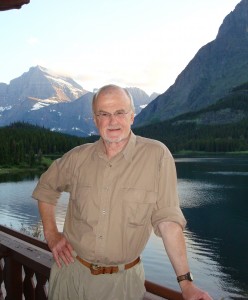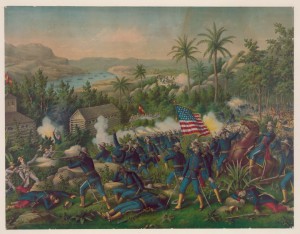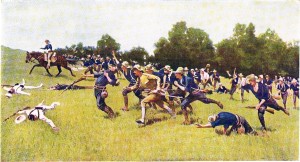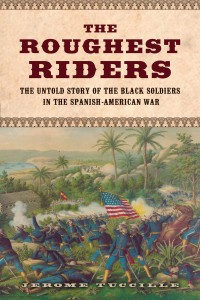 It’s probably the most enduring image of the Spanish-American war, made famous by Frederic Remington’s painting Charge of the Rough Riders at San Juan Hill: Theodore Roosevelt, on horseback, leading the First U.S. Volunteer Cavalry regiment in a ragged run up a gentle slope, straight into the oncoming fire of Spanish troops. Newspapers of the day reported that the future president and his men took the hill bravely, and Roosevelt received a hero’s welcome when he returned home.
It’s probably the most enduring image of the Spanish-American war, made famous by Frederic Remington’s painting Charge of the Rough Riders at San Juan Hill: Theodore Roosevelt, on horseback, leading the First U.S. Volunteer Cavalry regiment in a ragged run up a gentle slope, straight into the oncoming fire of Spanish troops. Newspapers of the day reported that the future president and his men took the hill bravely, and Roosevelt received a hero’s welcome when he returned home.
Jerome Tuccille, author of The Roughest Riders: The Untold Story of the Black Soldiers in the Spanish-American War, wants people to know that it didn’t exactly happen that way, though. Not only did the Rough Riders not charge up San Juan Hill (their main assault was on nearby Kettle Hill); they weren’t even the troops at the head of the charge. That honor belonged to the black soldiers of the Ninth and Tenth Cavalry and Twenty-Fourth Infantry regiments—also known as “Buffalo Soldiers” because of their brown skin and tight, curly hair—who sustained heavy losses but received little recognition for their service.
Tuccille’s book helps correct this wrong, and here he discusses how he came to write it, how much research was involved, and what conditions were like near the turn of the twentieth century for the nation’s all-black military units.
When did you first become interested in writing about the Buffalo Soldiers?

The Ninth and Tenth black cavalry saved the Rough Riders from extermination at Las Guasimas and other Cuban battlefields. (Library of Congress)
Roosevelt mentions them in passing in his own book, The Rough Riders, but in a dismissive manner, writing that they performed well but only because they were led by white officers. Hemingway said it best 80 years ago, claiming that all writers need to develop their own bullshit detectors. My own detector started to quiver when I read that, inspiring me to do further research on the subject to get at the real story behind the headlines.
Other sources mentioned that the Buffalo Soldiers played key roles in the battles in Cuba and actually rescued Roosevelt and his Rough Riders from extinction. Roosevelt was a masterful self-promoter, and the press fawned over him at the time since he made for great copy. But, the more I delved into the story, the more I realized that the Buffalo Soldiers were the true heroes in the victory on San Juan Hill—but their contribution was minimized because of the racism of the period.
The meat of the book covers the Buffalo Soldiers’ crucial involvement in the Cuban battles. How big was their force at that time? How much of the American military presence in Cuba did they account for?
The Buffalo Soldiers were divided into four regiments, two cavalry and two infantry units, amounting to a total of 1,685 troops out of 15,000 American soldiers in all. The Buffalo Soldiers suffered the greatest losses: 17 percent of their total compared with about 10 percent of the white regulars. Roosevelt’s Rough Riders totaled only about 500 in all, and he was down to only 50 by the time they charged up Kettle Hill and then San Juan Hill. The black soldiers beat him up every time and saved Roosevelt and his Rough Riders from being totally annihilated.

Frederic Remington’s famous painting Charge of the Rough Riders at San Juan Hill fails to show the black soldiers who led the assault.
The book contains an impressive level of detail, including vivid scenes from battlefields and many direct quotes from eyewitnesses and period newspapers. How extensive was your research for the book, and what sources were most helpful?
The research for this book occupied about five years of my life. I read every piece of literature I could find on the subject. Information available from the National Park Service, the Library of Congress, and other key sources was particularly helpful. The rangers at the Presidio in San Francisco supplied me with documents not otherwise available. I put more legwork into this book than any book I have previously written. Organizing it into an engaging narrative was extremely challenging. But, I was driven to complete the book because of my own passion for this little-known story.
It’s disappointing to learn how much Theodore Roosevelt rescinded his own respect for the Buffalo Soldiers that fought alongside him in Cuba. He went from praising their actions to claiming that he had to use his gun to keep them on the battlefield. Why do you think his perspective changed so drastically?
Roosevelt was being feted by the press as the true hero of San Juan Hill, and he was afraid of losing his luster to the black troops if word got out about their real contribution. So, as time went on, he gave in to the prevailing racism of the period to play down the Buffalo Soldiers’ role in rescuing him and his Rough Riders. It was all about protecting his glory as he was lionized by the press, which enhanced his political career later on. He was a politician first and foremost, and he wasn’t about to let the heroic performance of the Buffalo Soldiers tarnish his public image.
Most of the commanders that led the Buffalo Soldiers during the Spanish-American War were white, and surprisingly one, Joseph Wheeler, was even a former Confederate general. How much opportunity did the Buffalo Soldiers have to lead themselves before the army integrated entirely?
 The military wasn’t officially integrated until Harry Truman did it with an executive order in 1948. Before that, the army grudgingly promoted some black soldiers to the rank of officers, but it was a slow, excruciating process that dragged on over several decades. Even in World War I and II, most of the black units were commanded by white officers, many of whom went out of their way to praise the black troops under their command.
The military wasn’t officially integrated until Harry Truman did it with an executive order in 1948. Before that, the army grudgingly promoted some black soldiers to the rank of officers, but it was a slow, excruciating process that dragged on over several decades. Even in World War I and II, most of the black units were commanded by white officers, many of whom went out of their way to praise the black troops under their command.
Race is still a central topic of discussion in America today. How do you see your book as important to the conversation?
Racism remains prevalent in US society and elsewhere around the globe. I regard it as the greatest evil afflicting the human race. I hope my book contributes to the national conversation by elevating racism from a footnote in American history to a headline story, tying it in with the Black Lives Matter movement. I think my grandsons’ generation, ranging from 10 to 14 years old, may be the first truly colorblind generation in history. At least I hope so. Time will tell.
—compiled by Geoff George
The Roughest Riders: The Untold Story of the Black Soldiers in the Spanish-American War officially pubbed on September 1, 2015. It is available to purchase everywhere books (and e-books) are sold, including our website.
No Comments
No comments yet.